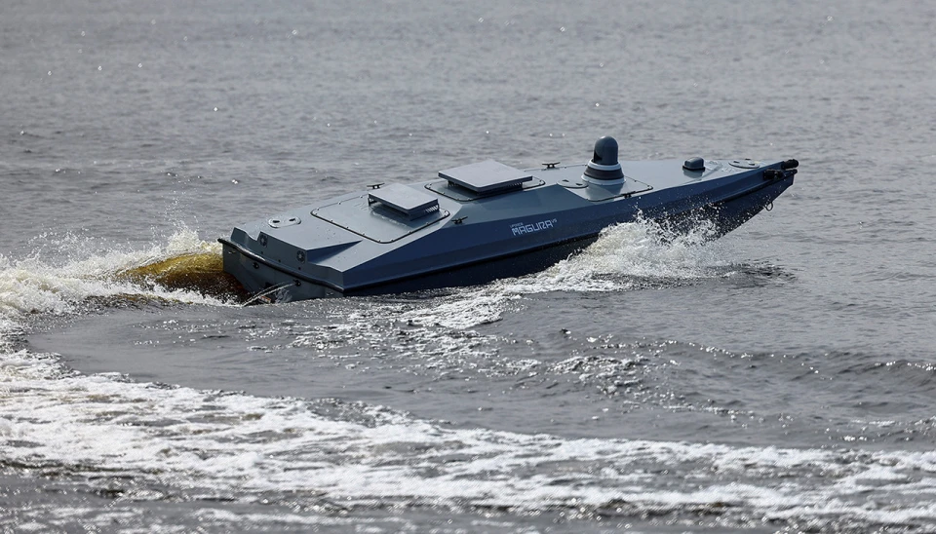China has ended two days of military drills around Taiwan that saw jets loaded with live munitions and warships practise seizing and isolating the self-ruled island.
The exercises simulated strikes targeting Taiwan's leaders as well as its ports and airports to "cut off the island's 'blood vessels'", Chinese military analysts told state media.
JOIN US ON TELEGRAM!
Follow our coverage of the war on the @Kyivpost_official.
Beijing considers the democratic island part of its territory and has not ruled out using force to bring it under its control.
The war games kicked off Thursday morning, as aircraft and naval vessels surrounded Taiwan to conduct mock attacks against "important targets", state broadcaster CCTV said.
Codenamed "Joint Sword-2024A", the exercises were launched three days after Taiwan's President Lai Ching-te took office and made an inauguration speech that China denounced as a "confession of independence".
Beijing's defence ministry spokesman Wu Qian said Friday that Lai was pushing Taiwan "into a perilous situation of war and danger".
"Every time 'Taiwan independence' provokes us, we will push our countermeasures one step further" until "complete reunification" is achieved, he said.
The origin of the dispute dates back to the Chinese Civil War, when nationalists fled to Taiwan following their defeat at the hands of the Communist Party in 1949.
The drills are part of an escalating campaign of intimidation by China, which has carried out a series of such exercises in recent years.

Tiananmen Square Massacre – A Fading Memory 35 Years Later?
Beijing has also amped up its rhetoric, with its foreign ministry on Thursday saying "Taiwan independence forces will be left with their heads broken and blood flowing".
On Saturday, Taiwan's presidency said it had "a full grasp of the situation and appropriate responses to ensure national security".
"China's recent unilateral provocation not only undermines the status quo... it is also a blatant provocation to the international order," Presidential Office spokesperson Karen Kuo said.
- Closer 'than ever' -
A total of 111 Chinese aircraft and dozens of naval vessels took part in the drills over two days, according to Taiwan's defence ministry.
On Friday evening, China's army published images of the drills' "highlights", featuring missile-launching trucks, fighter jets taking off and naval officers looking through binoculars at Taiwanese ships.
Meng Xiangqing from Beijing's National Defense University told state news agency Xinhua that People's Liberation Army vessels "were getting closer to the island than ever before".
Beijing launched similar exercises in August and April last year after Taiwanese leaders visited the United States.
China also launched major drills in 2022 after Nancy Pelosi, then speaker of the US House of Representatives, visited Taiwan.
The scale of the most recent ones was "significant, but is nowhere near as big, it seems, as last August's", Wen-Ti Sung, a nonresident fellow at the Atlantic Council's Global China Hub, told AFP.
Sung and other analysts said the geographic scope of the exercises had increased, with a new focus on isolating Taiwan's outlying islands.
The drills took place in the Taiwan Strait and to the north, south and east of the island, as well as around the Taipei-administered islands of Kinmen, Matsu, Wuqiu and Dongyin.
Tong Zhen, from China's Academy of Military Sciences, told Xinhua the drills "mainly targeted the ringleaders and political centre of 'Taiwan independence', and involved simulated precision strikes on key political and military targets".
- Calls for restraint -
The dispute has long made the Taiwan Strait one of the world's most dangerous flashpoints.
On Saturday, the United States again urged China to "act with restraint".
"Using a normal, routine, and democratic transition as an excuse for military provocations risks escalation," State Department spokesman Matthew Miller said in a statement.
US Defense Secretary Lloyd Austin will meet his Chinese counterpart at the end of the month at the Shangri-La Dialogue, an annual gathering of defence officials, the Pentagon said Friday.
"Beijing is trying to use this very high-profile show of force to not only show displeasure against Taiwan, but also... to deter and dissuade other countries and partners from contemplating further cooperation or engagement of Taiwan," said the Atlantic Council's Sung.
"That furthers isolation of Taiwan, which allows Beijing to negotiate with Taiwan going forward from a position of strength."
On Saturday, foreign ministry spokeswoman Hua Chunying shared an image apparently taken from a PLA jet window, which had a sticker of China's flag on it.
"China's national flag... in the same frame with the Central Range mountains on Taiwan," she wrote on social media platform X.
"A most welcome sight for the 1.4 billion Chinese people."
You can also highlight the text and press Ctrl + Enter






